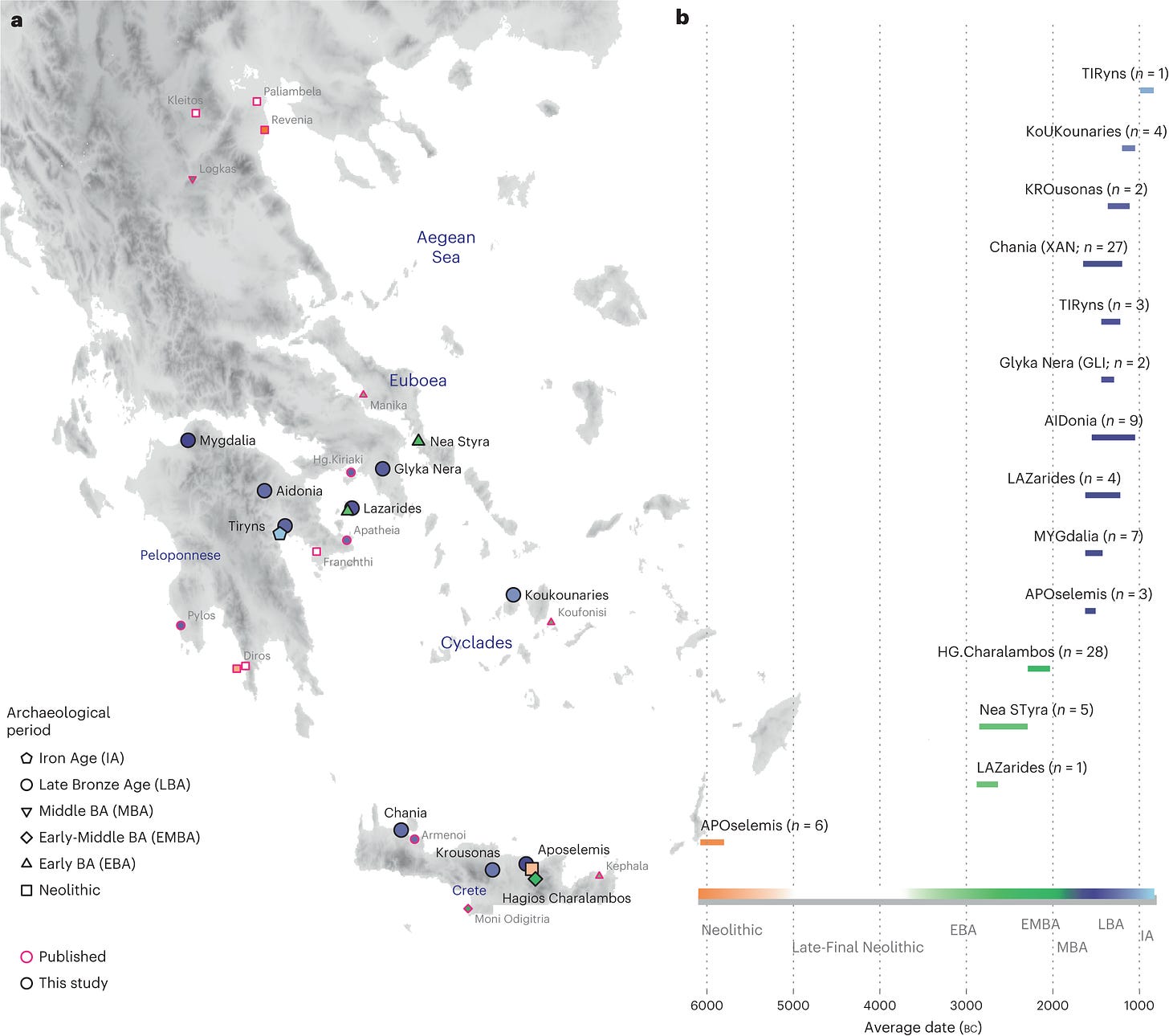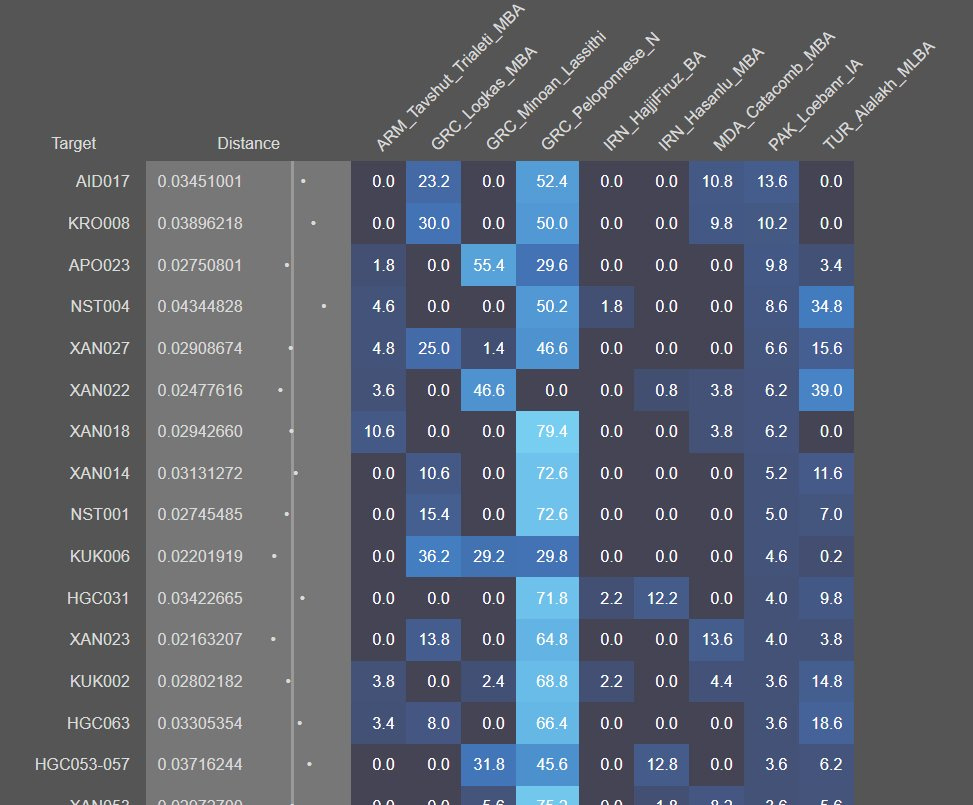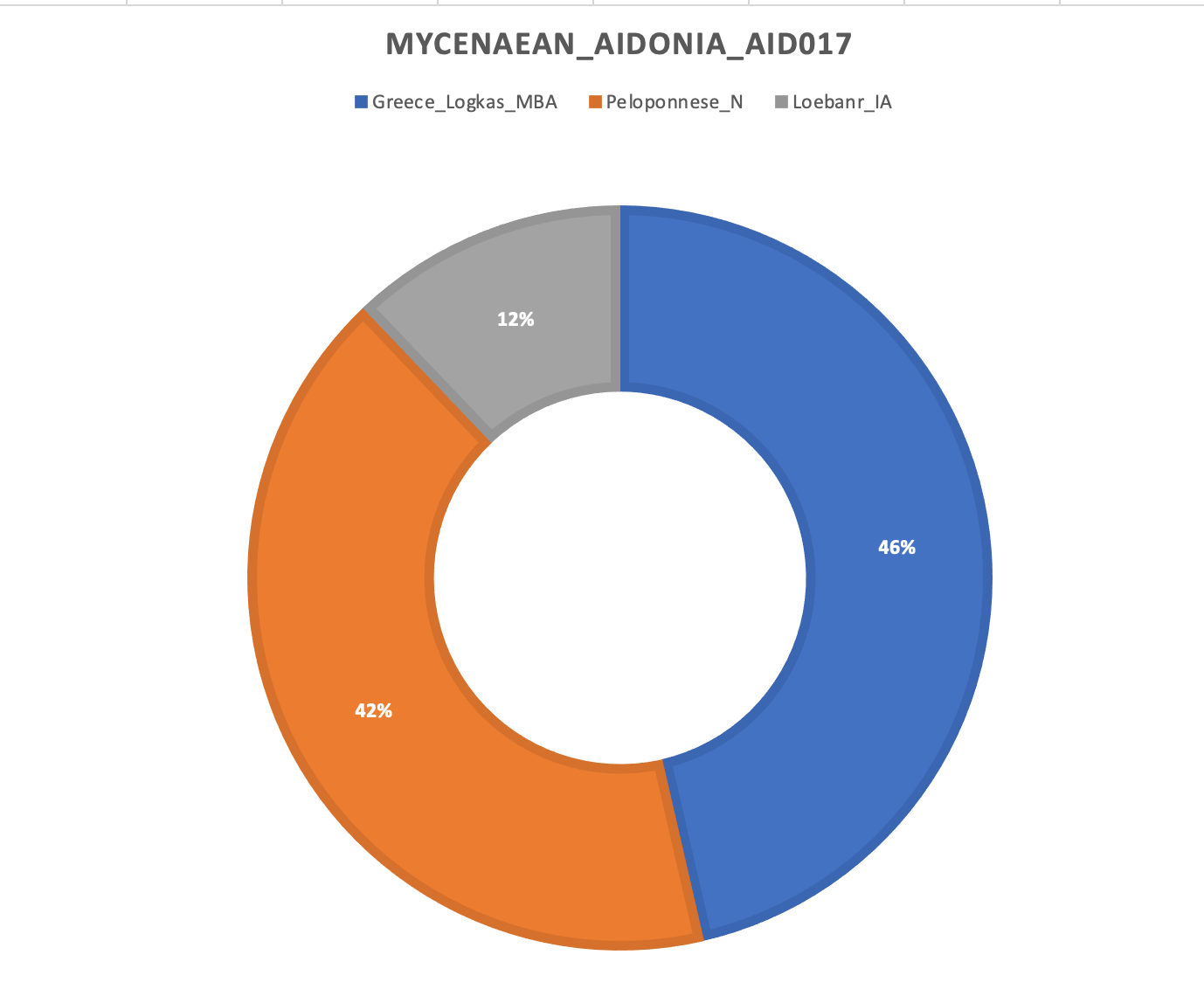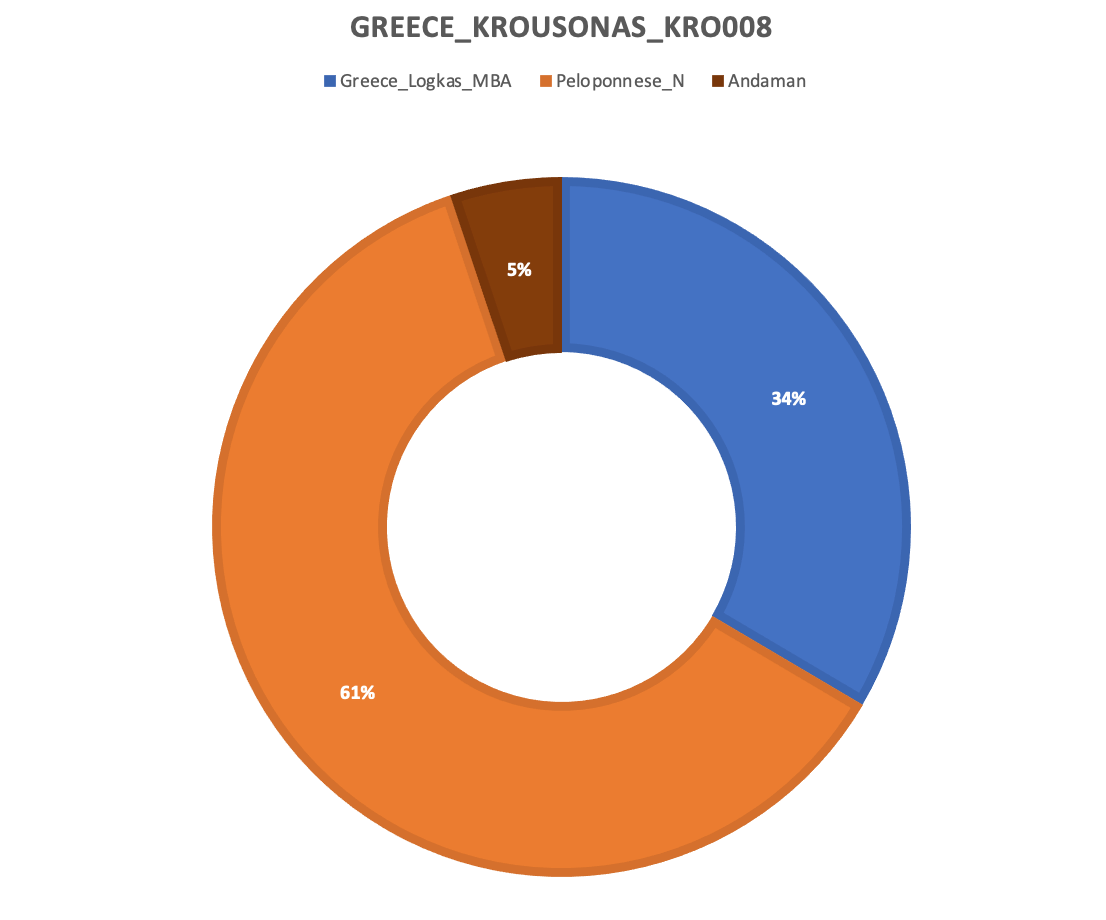Source: here.
Indian DNA in the Greek Age of Heroes?
Share this post

###Indian DNA in the Greek Age of Heroes?
eruditus.substack.com
Copy link
Indian DNA in the Greek Age of Heroes?
Jan 17
5
2
Share this post

###Indian DNA in the Greek Age of Heroes?
eruditus.substack.com
Copy link

A few days ago, a new paper with 102 samples from the Greek Islands came out. I had seen a presentation on it a few weeks ago, so I knew what to expect, and wasn’t very surprised. I had even tried my own hand at modeling the samples and found the results to be fairly typical of what one would expect Early-Middle Bronze Age Greeks to have.
However, @agenetics1 brought something strange to my attention, some of these Bronze Age Greeks allegedly had Indian ancestry (Pakistan_Loebanr_IA) in his model.
Thanks for reading Shiṣṭagoṣṭhī | Collegium Eruditi! Subscribe for free to receive new posts and support my work.
Subscribe

Naturally, I was pretty surprised, so I decided to see if formal statistical tools used to model populations such as qpAdmix also reflect this Indian DNA. Thankfully, I had already merged these new Greeks in my dataset, and hence could use them to check if this claim was true.
It turns out, it was. I’m not sure exactly what happened here, but a good number of these Bronze Age Greeks probably have legitimate Indian ancestry. I modeled the first two samples with the highest Indian DNA (AID017, KRO008). First I used Loebanr_IA as the Indian source and then I used Andamanese Onge as the Indian-Hunter-Gathere proxy (IHG) just to confirm the presence of excess IHG DNA (which would be a sureshot indicator of Indian ancestry).

Greece_Logkas here represents Northern Proto-Greek type samples, while Peloponnese is Neolithic Farmer with some extra Anatolian/Caucasus ancestry. Loebanr_IA are Iron Age samples from Gandhara.
Now, checking for Andamanese DNA in Krousonas KO008. (I checked for Andamanese in Aidonia too, just didn’t make a doughnut of it, but you can view all the files in this link below).

Now, let’s see how old these samples are and what the archaeological context is.
KRO008 (Square A1: Stratigraphic Layer 1; Lab 2016-4) is an individual of estimated age range 35-55 years, tentatively assigned to female. No apparent skeletal pathologies were identified. Radiocarbon-dating on human bone (KRO008.A): 2975±24 BP, 1365-1114 cal BC (95% probability), (ID: MAMS-49524, AMS, IntCal20).
AID017 (16/103058 skull) is an adult female from a secondary burial of fragmentary and commingled remains of two individuals at the northern end of Tomb 103’s Centre Cist. Preservation and the dissociation of elements prevents any further biological profiles, while associated ceramic material suggests a date of Late Helladic I-IIA.
Both these samples are women, so we don’t have haplogroups, and I haven’t tested the other individuals yet (this is a hasty post, and I am somewhat busy at the moment), however, 1200 BCE for KRO008 does not sound too unreasonable, and Late Helladic or Mycene Period for AID017 (Late Helladic (c.1550–c.1050 BCE).
What’s going on here? I’m not sure, but then I remembered a paper I had read months ago that said the Minoan writing script for their own language, Linear A, could successfully be decoded to contain some Sanskrit words.
Here’s the Abstract.
This paper presents the analysis of 10 Minoan Linear A inscriptions as grammatical Indo-Aryan statements. The paper demonstrates the historical plausibility of the presence of Indo-Aryan speakers on Crete circa the 17th c. BCE. The paper argues for the soundness of comparing Linear A words with very similar Indo-Aryan forms attested in later stages of Sanskrit: One cannot expect to find the same expressions attested both in Minoan inscriptions and in the Rigveda, even if they reflect dialects of the same language. This analysis of Linear A uses the same basic principles and phonetic values as Ventris & Chadwick’s analysis of Linear B. The basic principles of the syllabic sign system of Linear B are summarized, and the phonemic reading rules specific to Linear A are presented. The main body of the paper comprises the analysis of 10 Minoan Linear A inscriptions as grammatical Indo-Aryan statements. Also, Minoan Indo-Aryan etymologies of 16 Greek words are proposed, including θαλασσα ‘sea’, λαβυρινθος (labyrinth), κυπάρισσος ‘cypress’, etc. As a “control group” test, an attempt to interpret a Linear B inscription, known to be Greek, as an Indo-Aryan statement fails. The paper concludes that the resemblances between the words in the Linear A inscriptions and the corresponding Sanskrit forms presented in this paper cannot be due to random chance coincidence, and thus that the 10 Linear A inscriptions presented in this paper must represent an Indo-Aryan dialect
The advantage of this paper is it uses the same system used to decipher Linear B and the same sound-values for the graphemes (this is the consensus in Minoan scholarship, that Linear A&B are mostly the same script used to write two completely different languages. Think about Naskh used to write Arabic, Persian and Urdu)
The analysis below uses the same basic principles of the representation of the language by the script as Linear B does. It would be questionable to use some speculative, drastically different, manner of representation of the underlying language by the script than what Linear B uses.
Skipping the decipherment, (which does make a lot of sense in some aspects), the author gives us etymologies for some extremley cryptic Greek words (in classical philology, these words are thought to have come from some Pre-Greek substrate)
12.1 Indo-Aryan tarala ‘moving to and fro, trembling, tremulous’ ; ‘a wave’ (Monier-Williams 439) 27 Thus, tarala-ssa “trembling, tremulous place ; place of tremulous waves”, where the suffix - ssa is likely of Anatolian origin. > tala-ssa by contraction > θαλασσα ‘sea’ (possibly originally a toponym for the Mediterranean Sea specifically, and then later generalized to mean ‘sea’, ‘channel’, etc.)
12.3 There is a natural Minoan Indo-Aryan etymology for the Pre-Greek word πυργος ‘tower’. Previous proposals, none convincing, have included /-g-/ as part of the root, but if this single phoneme is analyzed as part of some unidentified suffixal element instead (as many endings of such Pre-Greek words contain), then there is a phonetically and semantically perfect Indo-Aryan source for /pur-/: Sanskrit 3.púr ‘stronghold, fortress; castle’, etc. (M-W 635) and moreover 2.pura (ibid.) is an exact match for a remarkable number of multiple meanings of Greek πυργος:
12.4 As further evidence of possible Minoan Indo-Aryan influence on the Greek lexicon, consider this very Cretan word’s etymology: “labyrinth” (λαβυρινθος) is proposed by Beekes 2010 to be derived from *dabúrintʰos, likely “Pre-Greek”, and indeed 〈DA-PU-RI-TO-JO〉 is attested in Linear B. The latter form has a quite natural Indo-Aryan etymology: dabh-/dambh- “to deceive” [Rigveda] (Monier-Williams p. 469) rītí “motion, course” [Rigveda] (Monier-Williams p. 881) For the connecting vowel of dabh-/dambh-, cf. “Dambholi”, a name for Indra’s thunderbolt (the root can also mean “destroy”); thus, dabhau-/dabho-/dabhu- is a plausible Indo-Aryan compounding form.
I must say, I am not one to get convinced by wild theories, but all this is making a lot of sense to me. These etymologies are fairly convincing. The author preempts some criticism and answers it. Isn’t it possible to read *anything* as Sanskrit?
Readers may fairly ask: given the enormous lexicon of Sanskrit as documented in MonierWilliams’ 1332-page dictionary, is it not possible to find some Sanskrit or Indo-Aryan interpretation of any possible string of syllabic signs? Indeed, I have asked that question of myself.
Skipping this part, but essentially, he tries to read Linear B (with an accepted Greek reading) as Sanskrit, but finds it doesn’t work like Linear A did. The author believes that the Mittani Indic warrior elite imposed it’s rule on the Minoans, and hence the Sanskrit.
Is that what truly happened? I don’t know. We need to investigate this a lot more, and we could turn out to be wrong also, but the Andamanese DNA in these samples means we cannot neglect the possibility of recent Indian migrants.
What were these Iron Age Indians doing in the Age of Achilles and Hector? No idea. Perhaps they decided to hop on an epic conquest to win back a stolen bride, a story they were all too familiar with ;)
